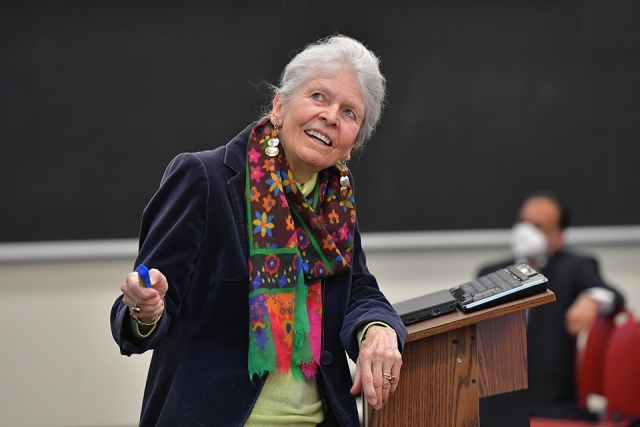
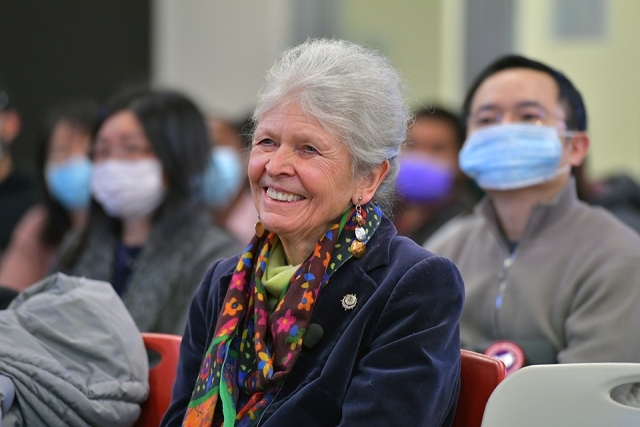
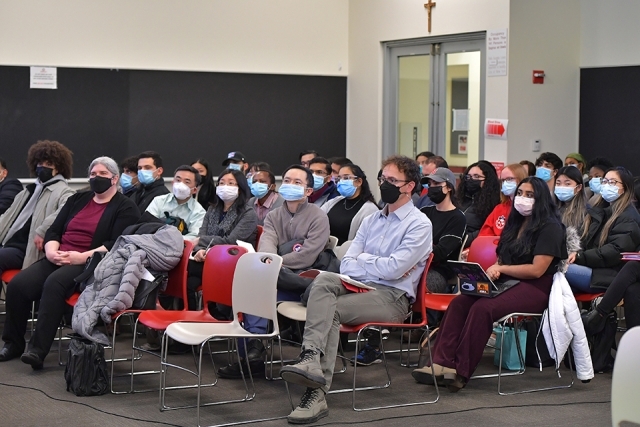
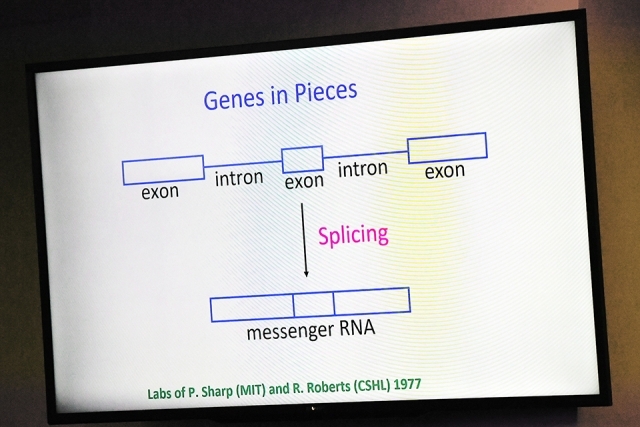
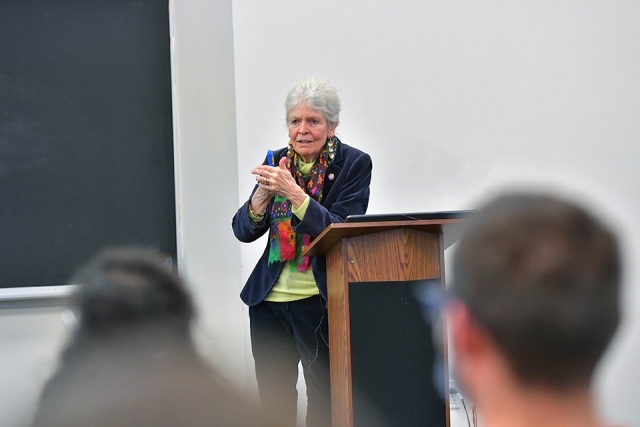
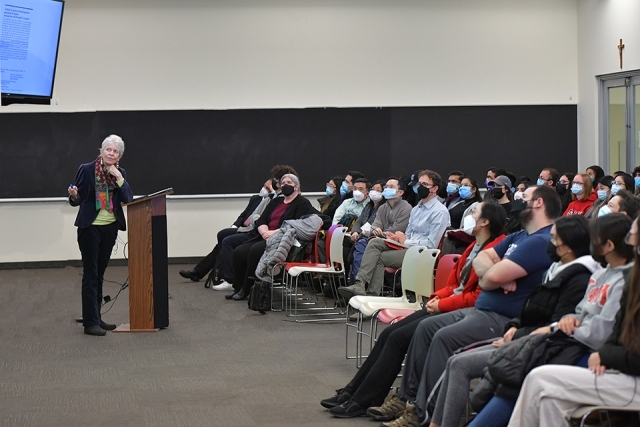
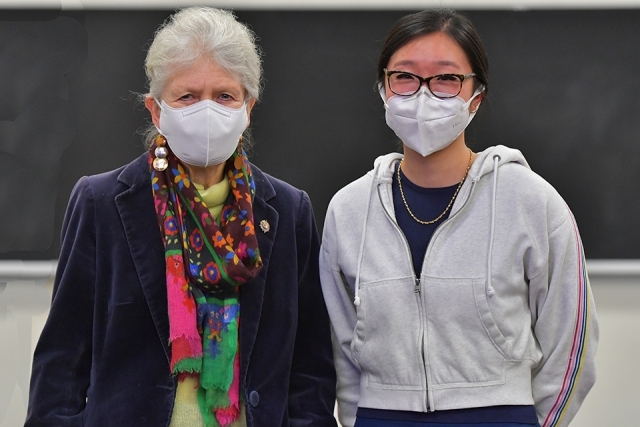
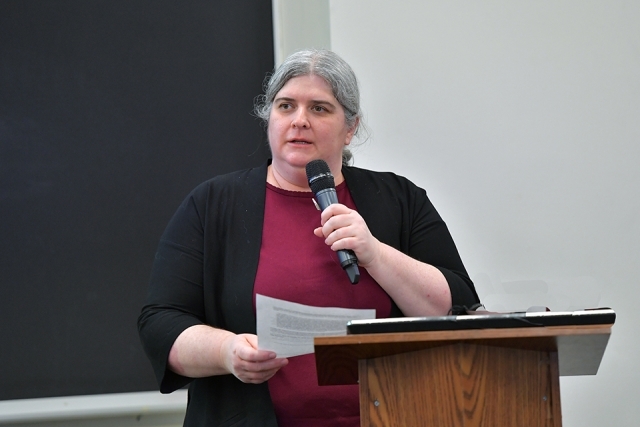
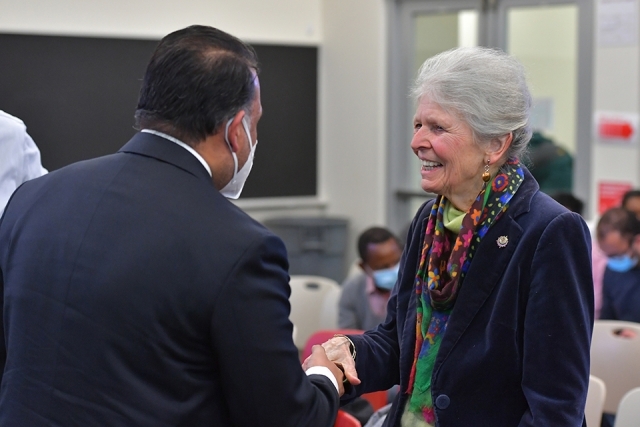
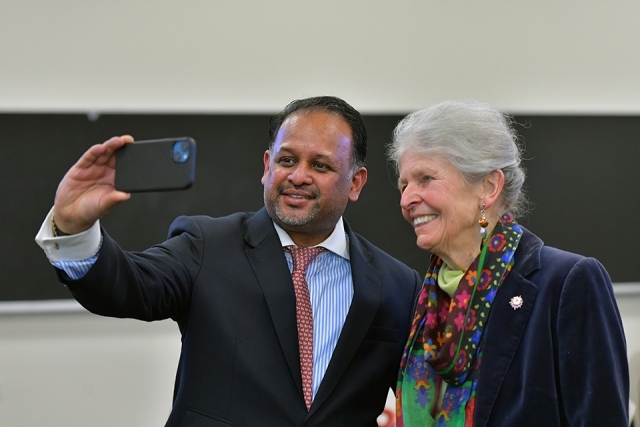
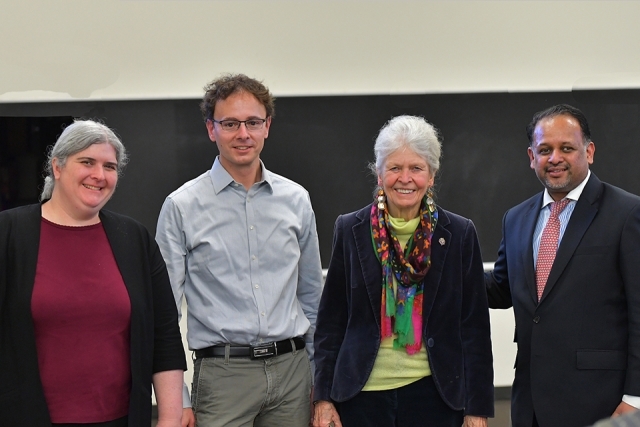











St. John’s University hosted one of the world’s preeminent experts in RNA at the Dr. Jaya Haldar Memorial Seminar on February 2 on the Queens, NY, campus. A pioneer in her field, Joan Steitz, Ph.D., a Sterling Professor of Molecular Biophysics and Biochemistry at Yale School of Medicine, discussed “Viral Noncoding RNAs: New Functions, New Structures.”
In 2015, the seminar was endowed by Dipak Haldar, Ph.D., in memory of the late Jaya Haldar, Ph.D., a retired full-time professor at St. John’s University. Dr. Haldar, a faculty member in the Department of Biological Sciences, focused her research on the posterior pituitary hormones oxytocin and vasopressin and on understanding the role of oxytocin in the spinal cord.
Dr. Steitz is best known for her groundbreaking work in RNA. With one of her students, she discovered and defined the function of small ribonucleoproteins (snRNPs) in premessenger RNA—the earliest product of DNA transcription—and was the first to learn that these cellular complexes (snRNPs) play a key role in processing messenger RNA by excising noncoding regions and splicing together the resulting segments.
When Dr. Steitz’s husband received a fellowship to the University of Cambridge in the United Kingdom, she accompanied him to do her postgraduate studies there. “But nobody knew what to do with me,” she said.
After speaking to other postdoctoral students, all of whom were male, she accepted an intriguing project none of them were willing to tackle for fear of not solving it: the idea of labeling an mRNA and binding ribosomes to it, to sequence where ribosomes began on an mRNA. “They were afraid they couldn’t solve this problem and then would not get a job back in the US. I didn’t expect to get a job. I was a woman. I’d be a research associate in someone else’s lab.”
After returning to the US, Dr. Steitz started her own lab at Yale. “We were mostly interested in translation,” Dr. Steitz noted. “The way I got from translation to RNA processing had very much to do with where the thinking about molecular biology was in the early 1970s. It was a time when we knew the basics of DNA replication and about how RNA was transcribed with DNA.”
She added, “Most people considered the golden age of molecular biology was over because we knew about all of this.” However, Dr. Steitz’s work considerably advanced the understanding of RNA.
“Meeting Dr. Steitz and hearing her speak was such an incredible opportunity, especially because I also do research in RNA biology at a lab here at St. John’s,” said Elizabeth Chu, an undergraduate student majoring in Biology.
“More and more evidence in recent years has shown the importance of noncoding RNA in normal physiological conditions, and Dr. Steitz certainly reinforced this with her recent work.”
She added, “Beyond her contributions to the Biological Sciences, I have reflected on Dr. Steitz’s pragmatic yet cheerful approach to life, despite the many challenges she faced as a female pioneer in RNA biology. It is a striking reminder of recent strides in equity and diversity, and how much work still remains.”
Sharona Priyev, a student in the B.S./M.S. program in Biology, was fascinated by Dr. Steitz’s lecture. “I found the entire idea of complementary base pairs to really be groundbreaking,” he said. “And to meet its discoverer, as well as further dive into its functions, was great.”
Desiree Sukhram, a graduate student earning a Master of Science degree in Biology, said, “It was an honor to listen to Dr. Steitz and speak with her afterward. It is so easy to forget how recently women were considered a side note in scientific history, only capable of assisting their male colleagues. Her career is a testament to how far our field has come in terms of equality. As a young woman of color working on my doctoral degree, I am excited for the future of female scientists.”
“Thanks to Dr. Steitz’s insightful lecture, I have learned that the cellular genome is too big to carry one specific function,” noted Marjola Deda, a Biology graduate student. “Furthermore, I believe that her extensive work on viral noncoding RNA is astounding. I am so happy that a woman in science has such a great impact on all of us.”
